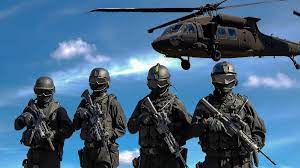The Global Firepower Military Strength Rankings for 2024 provide an annual snapshot of the world’s military capabilities, presenting a hierarchy of nations based on a PowerIndex score derived from over 60 factors. While this ranking is a valuable tool to gauge relative military strength, it’s essential to approach such assessments with a critical eye and recognize the complexity inherent in evaluating global defense capabilities.
Global Firepower employs a unique, in-house formula that goes beyond merely measuring raw firepower. By considering factors such as the number of troops, military equipment, financial stability, geographic location, and available resources, the rankings attempt to provide a comprehensive overview of military strength. The inclusion of special modifiers, including bonuses and penalties, further refines the list, allowing smaller, technologically advanced nations to compete with larger, lesser-developed powers.
One noteworthy aspect of the Global Firepower approach is the inclusion of economic strength and logistical efficiency in the assessment. Recognizing that military power extends beyond sheer numbers, these factors shed light on a nation’s ability to sustain and project its military force effectively. Economic stability and logistical prowess play crucial roles in shaping a country’s long-term military capabilities.
About Global Military Power Beyond Rankings:
The incorporation of geographic considerations in the rankings acknowledges that a nation’s military strength is inherently tied to its geographical context. Proximity to potential threats, strategic positioning, and territorial challenges can significantly impact a country’s defense capabilities. This nuanced approach helps paint a more accurate picture of a nation’s ability to navigate and secure its geopolitical landscape.
The list of the top 10 and bottom 10 countries highlights the diverse range of military capabilities across the globe. While the United States, Russia, and China lead the pack, smaller nations like Bhutan and Moldova find themselves at the lower end of the spectrum. This stark contrast underscores the importance of considering each country’s unique circumstances, challenges, and priorities.
The annual examination of how each nation’s ranking has changed over time adds a dynamic element to the assessment. Understanding the trends and shifts in military power provides valuable insights into geopolitical dynamics, global security trends, and emerging challenges. It prompts a deeper exploration of the factors influencing changes in military strength.
While the Global Firepower Military Strength Rankings serve as a useful starting point to understand global military situations, it is imperative to approach them critically. Acknowledging the limitations of any ranking system and considering the broader context, including geopolitical realities and evolving global dynamics, is essential. Military power is a multifaceted matter, and a nuanced understanding requires looking beyond numbers and embracing a comprehensive perspective.


